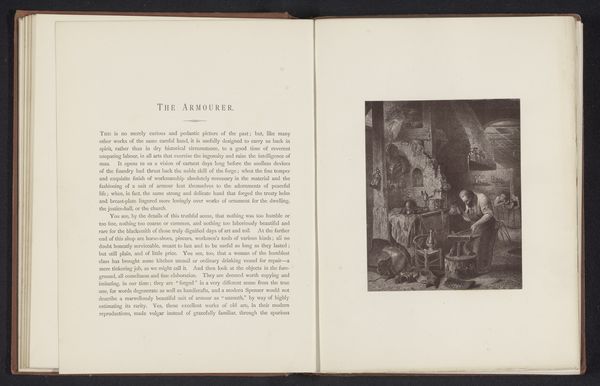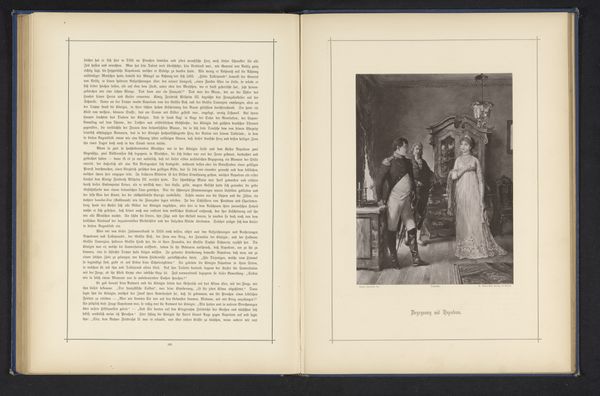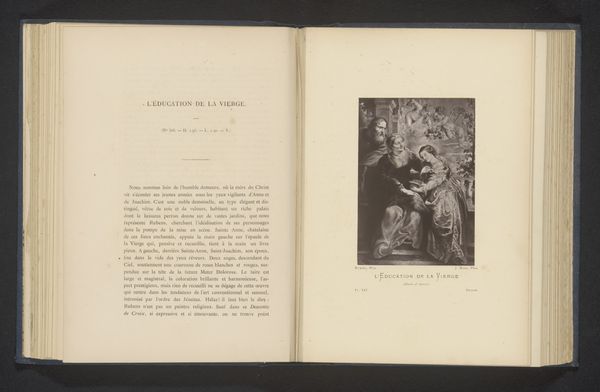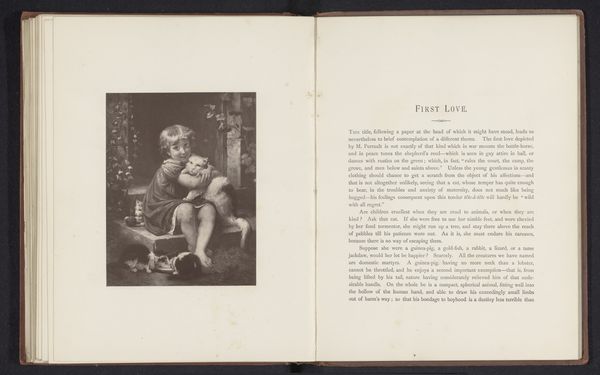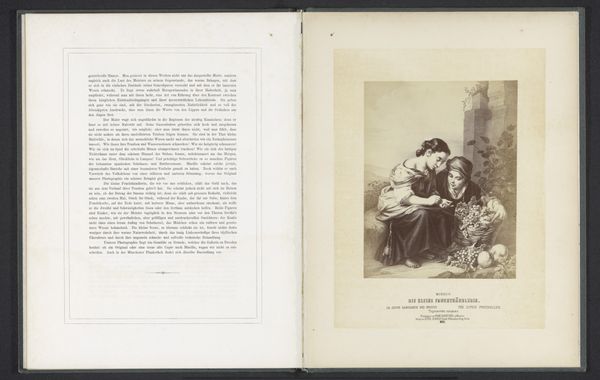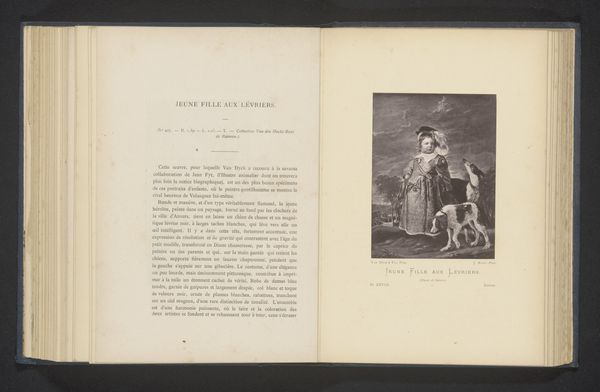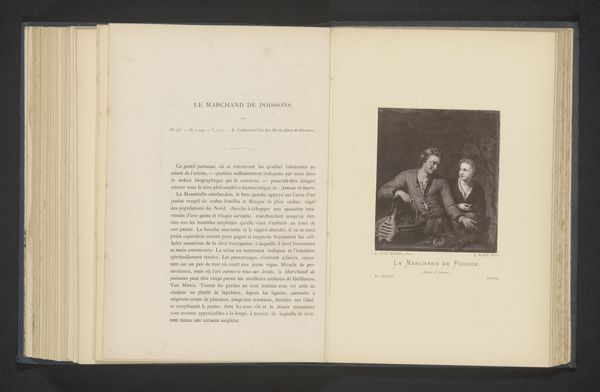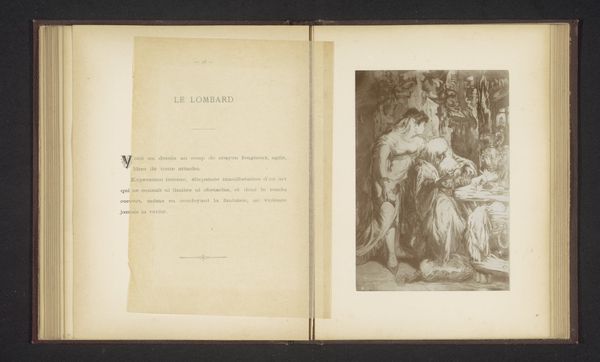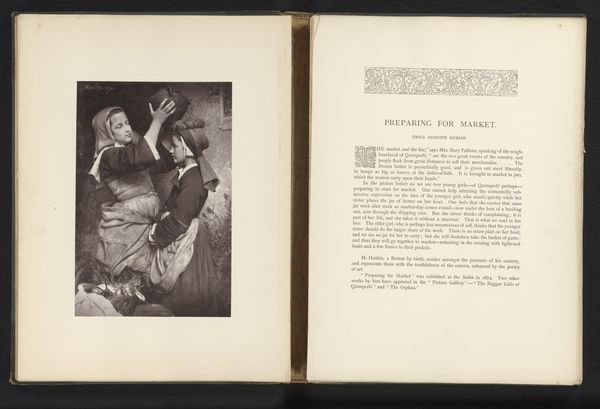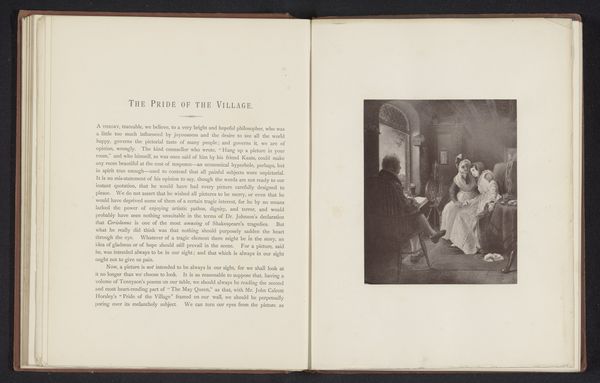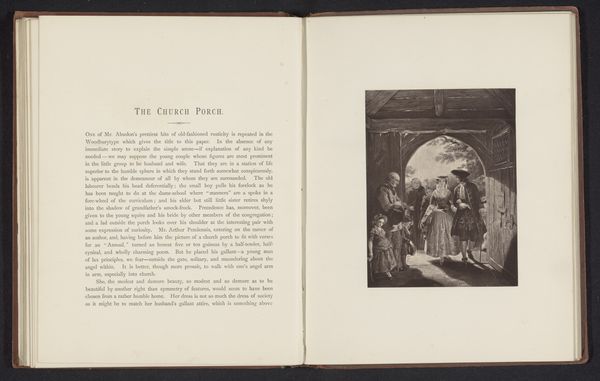
Fotoreproductie van een prent naar een schilderij, voorstellende een moeder met een kind op schoot voor bedtijd before 1871
0:00
0:00
Dimensions: height 153 mm, width 120 mm
Copyright: Rijks Museum: Open Domain
Editor: Here we have a photogravure from before 1871, "Fotoreproductie van een prent naar een schilderij, voorstellende een moeder met een kind op schoot voor bedtijd", or, "Photoreproduction of a print after a painting, depicting a mother with a child on her lap before bedtime". It’s interesting how photography is used here to reproduce another medium, further distancing us from an "original." What’s your take on this image, seen through a historical lens? Curator: It’s a poignant snapshot of Victorian ideals, wouldn't you agree? Consider the rise of the middle class during this period. Art increasingly depicted domestic scenes, reinforcing notions of family and motherhood. What statement do you think this reproductive method—photography of a print—makes about accessibility and the art market at the time? Editor: That makes sense! The artwork appears in a book; perhaps photography aided mass production and circulation, bringing this kind of sentimental imagery to a wider audience than a painting or single print could. How might the narrative elements contribute to its popularity? Curator: The scene aligns perfectly with Romanticism's emphasis on emotion and idealized versions of life. The pre-bedtime moment captures a tender, intimate connection. What role did institutions like the Royal Academy, where similar paintings might have been exhibited, play in shaping these tastes and defining artistic merit? Did the photographic reproduction enhance or diminish that “merit,” do you think? Editor: It is thought-provoking to consider how something accessible by a new technique might have changed in the value systems. This reproductive technique blurs the lines between fine art and mass media. The book version becomes something entirely new and democratic! Curator: Exactly. We see here not only a family scene but also an image reflecting shifting social dynamics and artistic consumption. The layering of mediums complicates its place in art history but reveals much about the era’s priorities and the democratization of art. Editor: Thank you. It’s interesting to see how even a seemingly simple image like this reveals such complex connections to society, art history, and technological change.
Comments
No comments
Be the first to comment and join the conversation on the ultimate creative platform.
